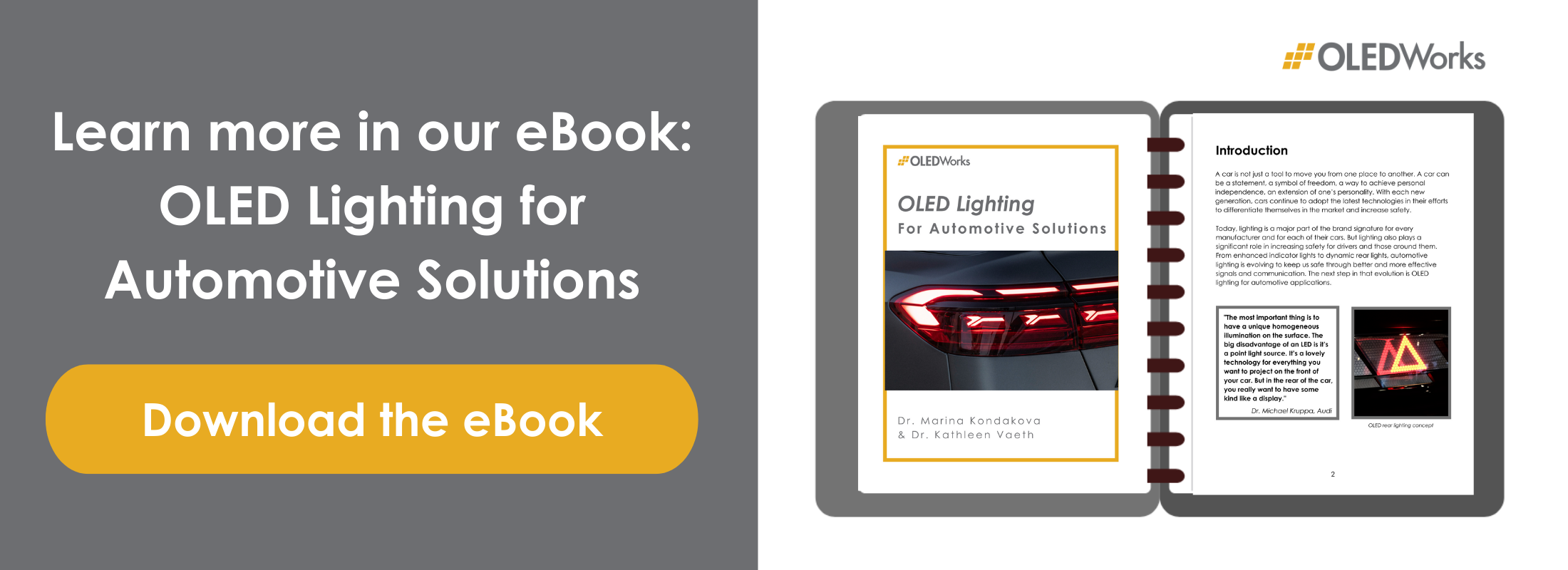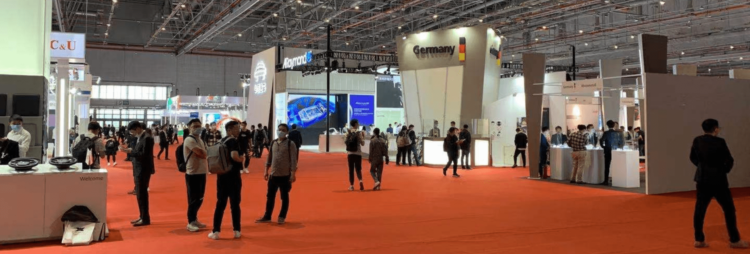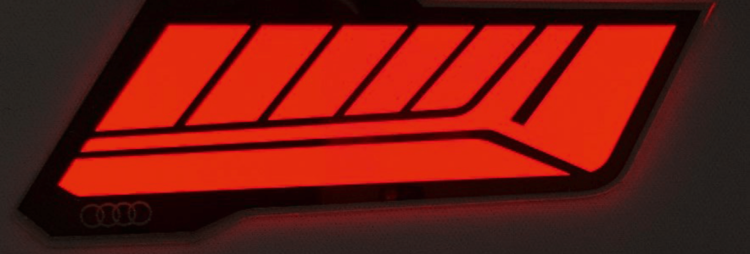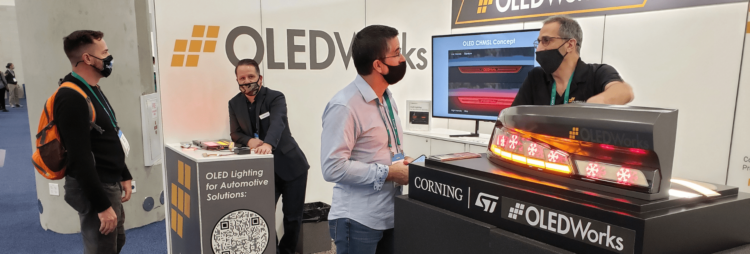
By John Holland, Chief Revenue Officer (CRO)
In a recent report by BIS Research, titled “Next Generation Automotive Lighting Market – A Global and Regional Analysis,” the authors proposed that the success of automotive lighting solutions will depend on whether the solution is (1) communicable, (2) adaptive, (3) ambient, and (4) flexible.
These four characteristics will revolutionize automotive lighting by transforming it from the basic objective of illumination to a state-of-the-art lighting experience that will enhance the aesthetics, design, utility, and overall safety of the vehicle. This increased safety will not only affect the vehicle’s driver and passengers, but the safety of the surrounding drivers, pedestrians, cyclers, and even nearby smart cars with self-driving capabilities.
This blog series is designed to cover the ins-and-outs of how OLED lighting is an ideal solution with respect to all four of these automotive lighting characteristics by product type:
- It is communicable. OLEDs provide automakers the ability for their vehicles to communicate with cars and people through additional methods beyond LED, commonly referred to as “Car-to-X” communication. OLED lighting can communicate upcoming hazards and sudden changes in speed or road conditions.
- It is adaptive. Headlamps and rear taillights have existed nearly as long as the automobile. They were very basic and served a singular function: increase nighttime visibility. OLEDs allow automakers to move past the vision of the early 1900s and allow forward-thinking automotive designers to accomplish new and extraordinary lighting objectives.
- It is ambient. OLED ambient lighting in automotive interiors and exteriors is fast becoming a differentiator in many ways. Lighting in the interior impacts the space, driver experience and has a significant impact on nighttime driving. A well-equipped vehicle with ambient OLED lighting can reduce driver fatigue, keep the driver alert, and reduce glare, as well as many other benefits. Exterior areas such as branding and badging are an exciting areas for OLEDs.
- It is flexible. Automotive designers are eager to take advantage of all the unique characteristics of OLED lighting and can soon take full advantage of OLEDs manufactured with flexible glass. OLED lighting is highly customizable, can project light in ways incandescent and LED lighting cannot, and allows for vastly improved aesthetics and distinctive options for design and brand differentiation. Now in a flexible form factor.

PART 1: Communicable and Adaptive
The world is changing and so is the automotive industry – quickly. We are now discussing and looking at electric vehicles from hundreds of manufacturers large and small. Partial autonomous driving and adaptive cruise control are a reality today, and fully autonomous self-driving vehicles are now going to become a reality. What does this mean for lighting in automobiles? It means the time to change is upon us, and change is essential to keep up with these other technological developments. The lighting in vehicles has not changed from a purely functional standpoint in a very long time. Future lighting technologies are now on the horizon, and OLED lighting fits very well within this evolution.
From a perspective of being both communicable and adaptive, I view these two characteristics as highly related and will discuss them in a hybrid approach. The ways in which these characteristics overlap will only increase in the future as technology develops.
OLED Lighting is Communicable.
OLEDs provide automakers the ability for their vehicles to communicate with cars and people through additional methods beyond what is possible with LED. OLED features and functionality are unique and provide many options. In addition to OLEDs being highly segmentable, they:
- Are homogeneous
- Are a surface area light source rather than a point source
- Have super high contrast
- Are perfectly defined
- Have significantly wider viewing angle
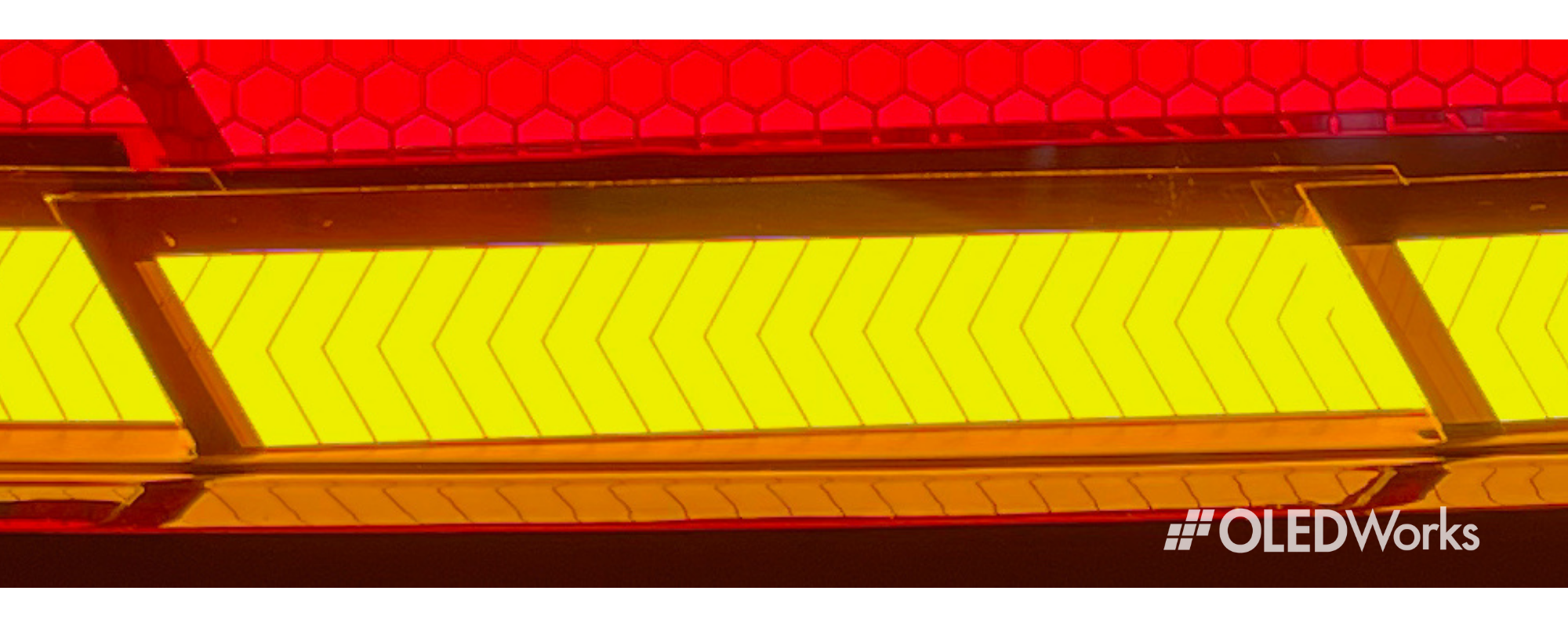
Segmented amber panel for automotive
Communication, commonly referred to as “Car-to-X” among other things, is when OLED lighting can communicate danger and sudden changes in speed or road conditions to surrounding vehicles or pedestrians because of their high segmentation. Communicable OLED taillights:
- Further improve road safety
- Improve protection and enhance design
- Offer interactive functionality
- Display danger or warning information; i.e., unsafe road conditions
When it comes to passive and active safety, passive safety features attempt to keep you safe when a collision occurs, and active safety features are those that attempt to prevent or mitigate a collision. When you think about OLED in respect to tail and stop functionality, the star of the show is the segmentation. Highly segmented OLED lights were once unimaginable in terms of their capabilities and communication.
First generation OLED light panels only had a few segments – around 4 to 6 segments to be exact. Second generation OLED light panels are somewhere around 40 to 60 segments, and the generation of panels being manufactured today are panels with 500 segments within an area of about 25 square centimeters. This opens the door for design flexibility and communication options, not to mention the improved safety capabilities. Color options are widely accessible as well in terms of reds, deep reds, ambers, and variations of white.
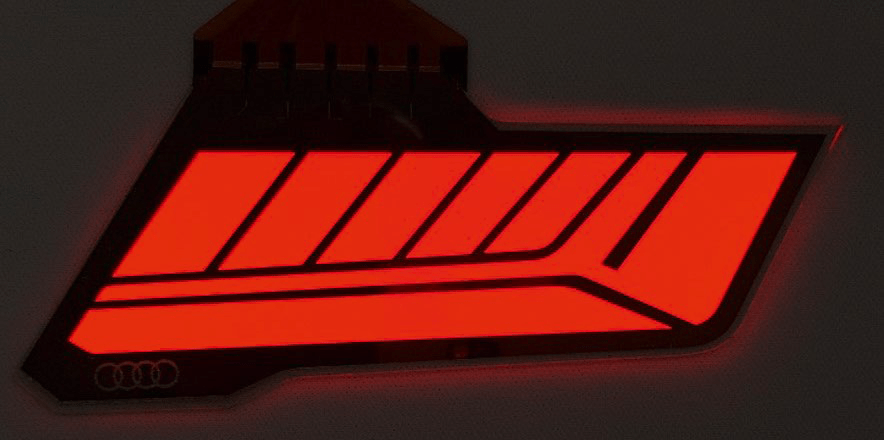
Early generation OLED panel with less than 10 segments

Latest automotive OLED lighting panel with over 600 segments. Lit dimensions: 56mm x 203mm
OLED Lighting is Adaptive
Adaptive rear lighting can measure the visibility condition, modulate the intensity of the light, and provide signaling according to the perception level needed. The other function of adaptive rear lights is to control the rear signaling according to the ambient light level. These lights could adapt to the needs of the driver and according to the weather and road conditions. The system could be similar to the adaptive front lighting system, which can adjust to different road and driving conditions. A very simplistic example of adaptive rear lighting is electric automobiles and the regenerative braking that automatically signals the brake light when the foot is taken off the accelerator.
Rear lighting systems can help prevent rear end collisions through increased safety. For example, a dynamic indicator light such as a flashing exclamation point, or other recognizable shape, has been shown to catch someone’s attention quicker than simply a red light, which is found in typical brake lights. There are many concepts that you could expand from this concept such as a dynamic and clear way to display slippery or icy road conditions within the segmented panel to alert the driver in the vehicle behind you. For autonomous vehicles, avoiding accidents and mishaps are significant concerns, as these are very quiet vehicles. These are things to think about.
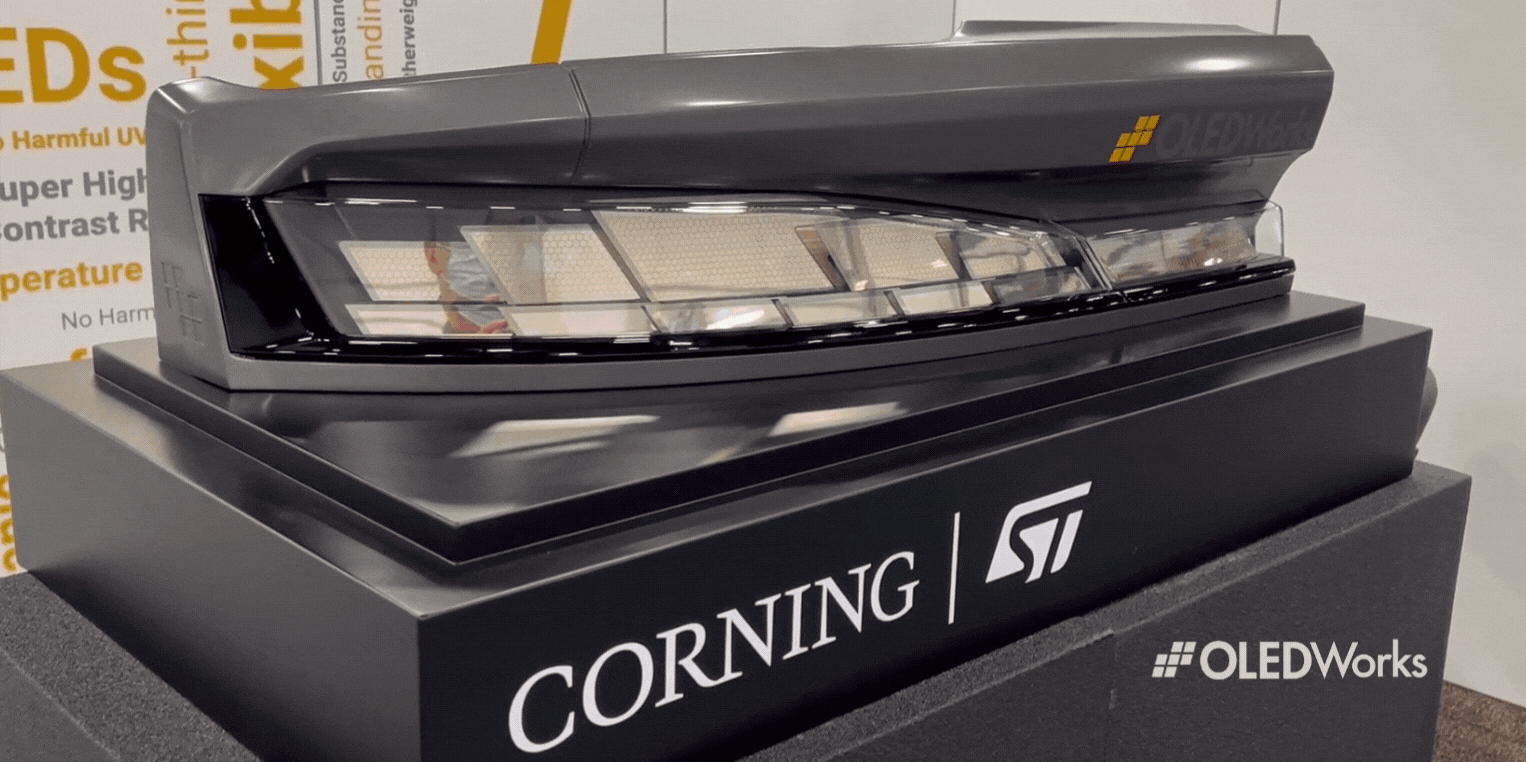
Communicable OLED taillights can display danger or warning symbols to vehicles around them
Further increases to safety are possible by bringing the dynamic segmentation of OLED lighting into the CHMSL (Center High Mounted Stop Light). Innovative design opportunities exist with CHMSLs. The ability to offer further improvements in this area through new designs, thin form factor, flexible, and branding are ideal opportunities for OLED. There are current projects looking into the feasibility of adding OLED lighting between layers of laminated glass in the rear windscreen of vehicles. That would be cool.
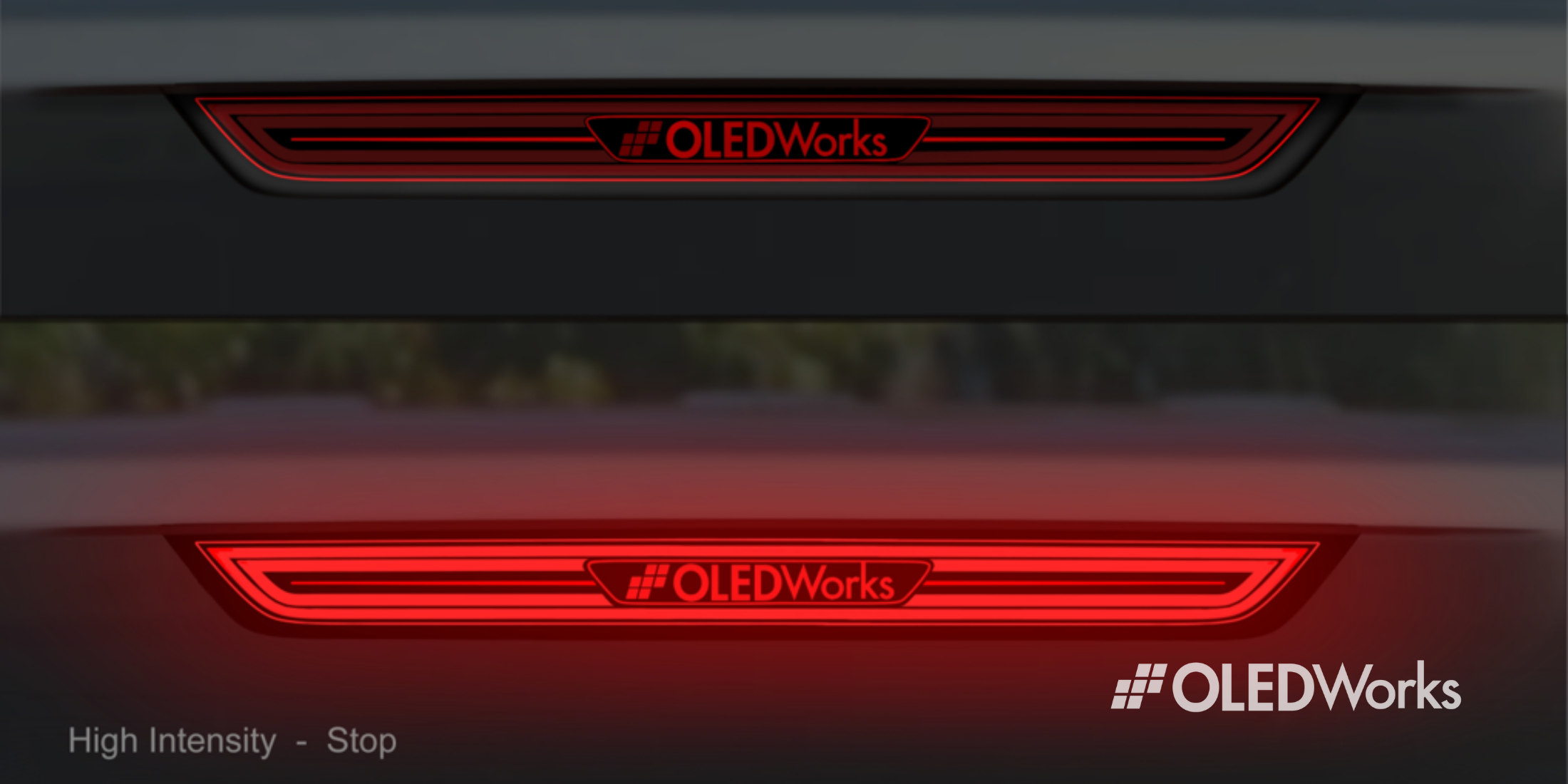
OLEDWorks CHMSL Concept
If we summarize all of this, we can think of rear lighting in a vehicle, for example, as either “Adaptive Brake Lighting” or even “Dynamic Tail Signaling”. OLED lights can illuminate or activate additional lights on rear (fog lights), illuminate other lights (regular tail) at increased intensity or invoke some kind of flashing or safety pattern (CHMSL) during certain emergency braking conditions.
Stay tuned to read the next part of the series and learn more about how OLEDs will change and improve the future of automotive lighting in the ambient and flexible categories.

